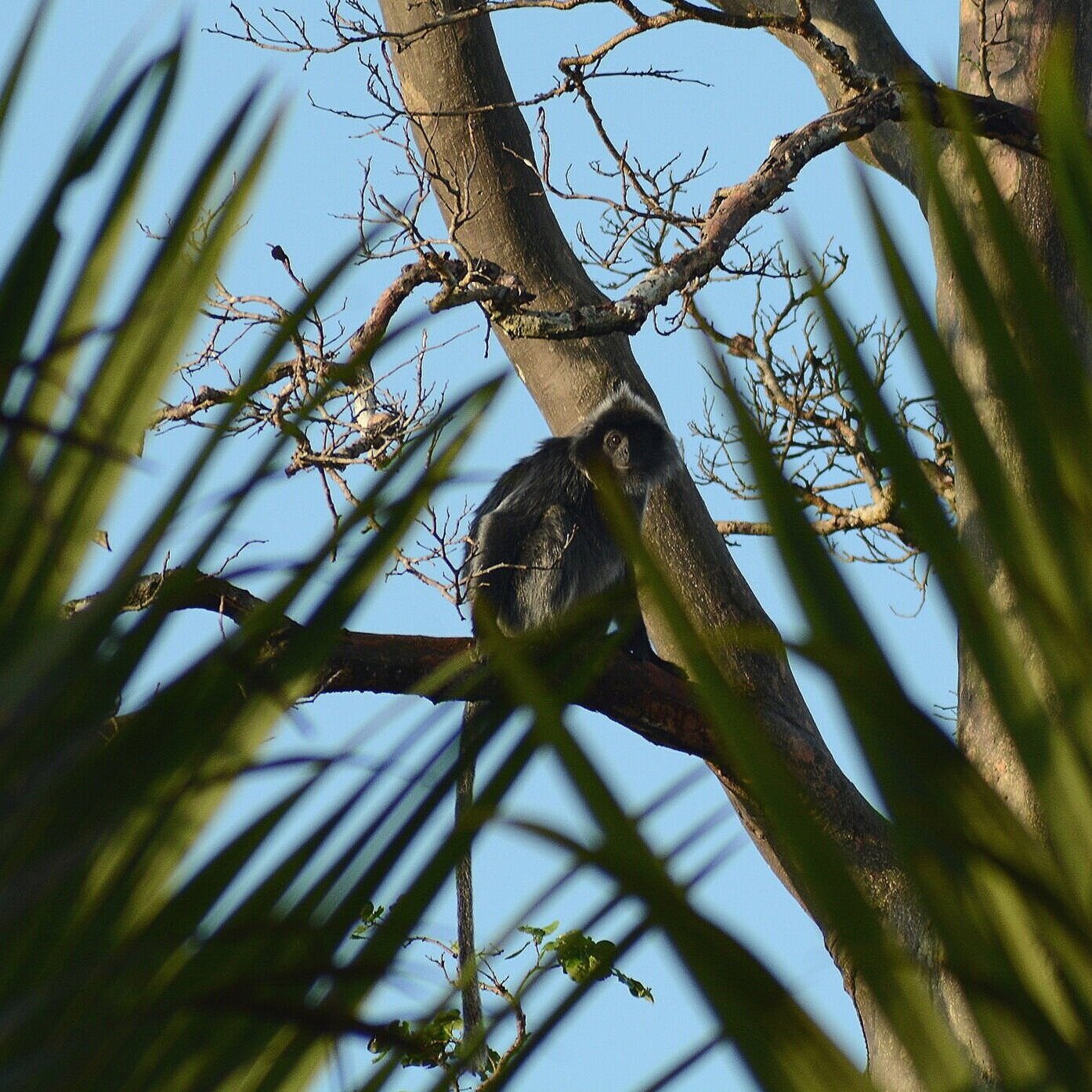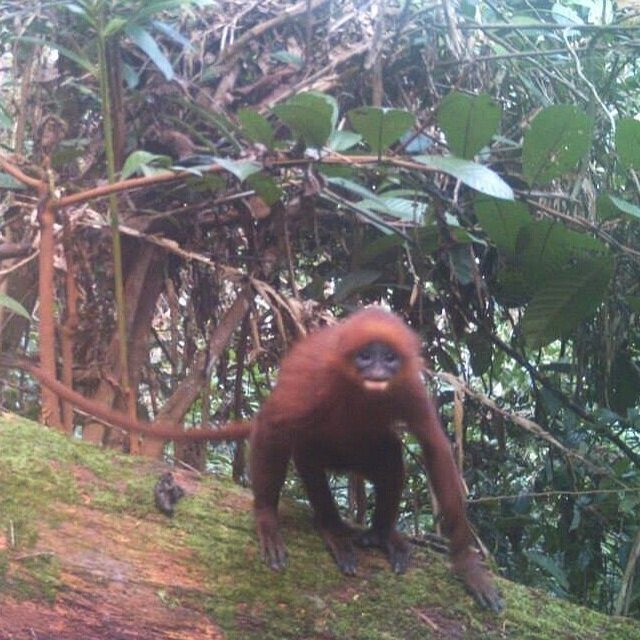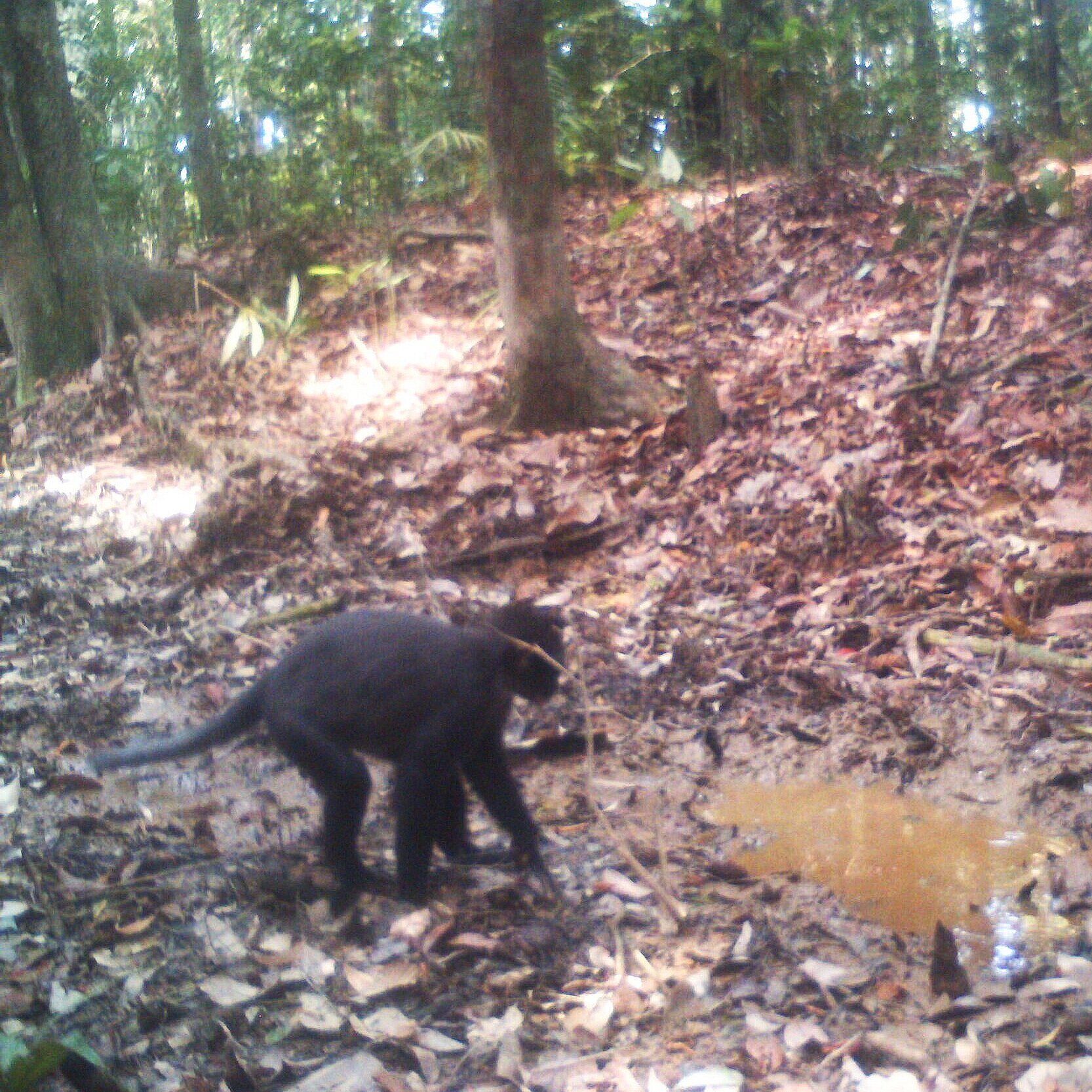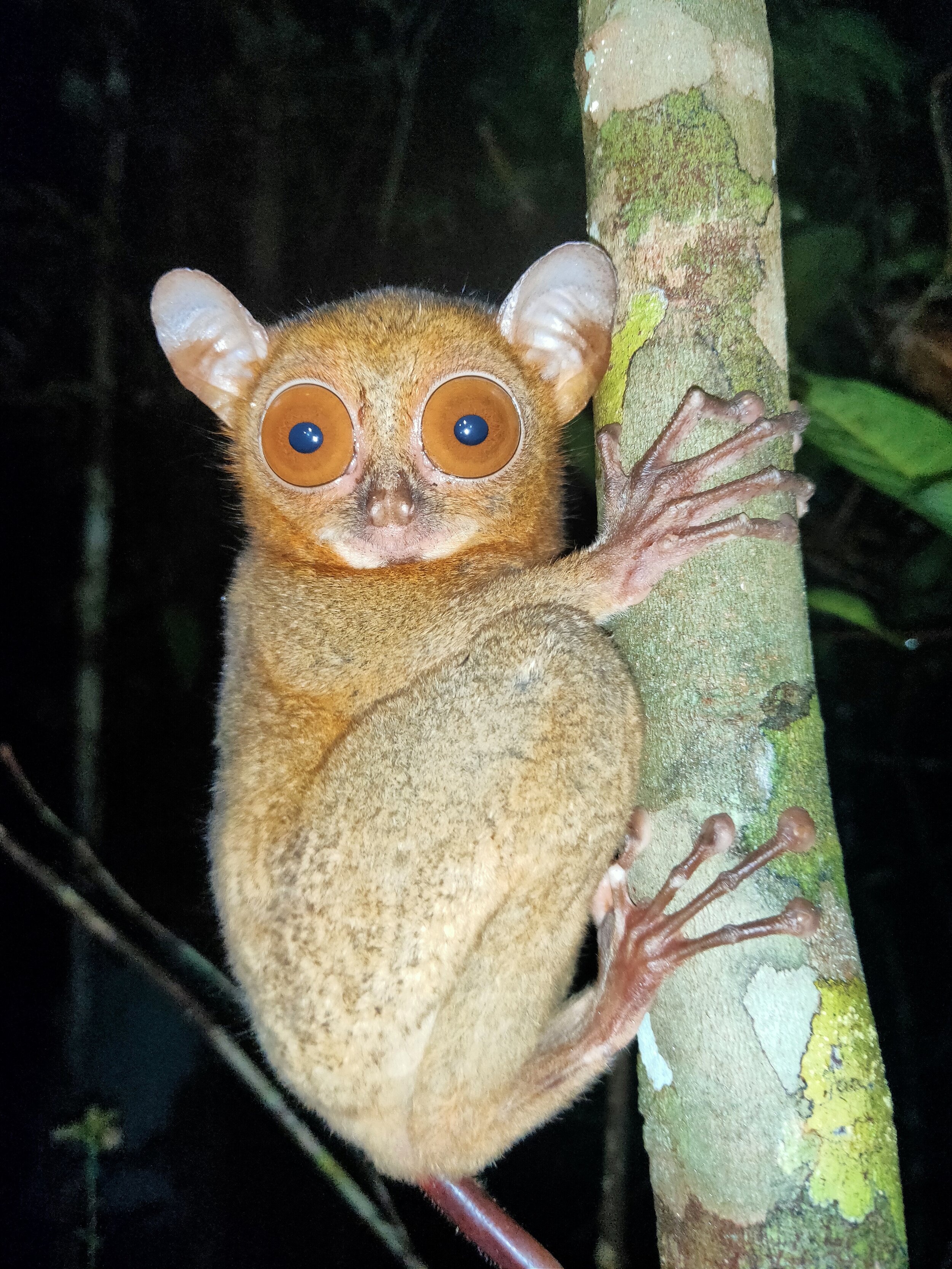We may be the Orangutan Foundation, but our work also protects crucial forest habitat home to a variety of other ecologically significant species. It could be said that the forests we primarily operate in, Tanjung Puting National Park and the Lamandau Wildlife Reserve, are truly bursting with life.
These tropical forests are found in one of the most biodiverse corners of the globe in Indonesian Borneo, where Primates make up some of the most captivating fauna. Bornean orangutans are an umbrella species helping to protect habitat for a number of these arboreal mammals, but here are some of the other primates our field team study, monitor, and observe:
Proboscis Monkey - Nasalis larvatus - Perhaps one of the most unusual species found in the forest and indeed the primate world, proboscis monkeys can only be found in the wild on the island of Borneo. It’s thought that the elongated noses of the males help to attract females, and their round bellies containing two stomachs aid the digestion of leaves that other animals cannot eat.
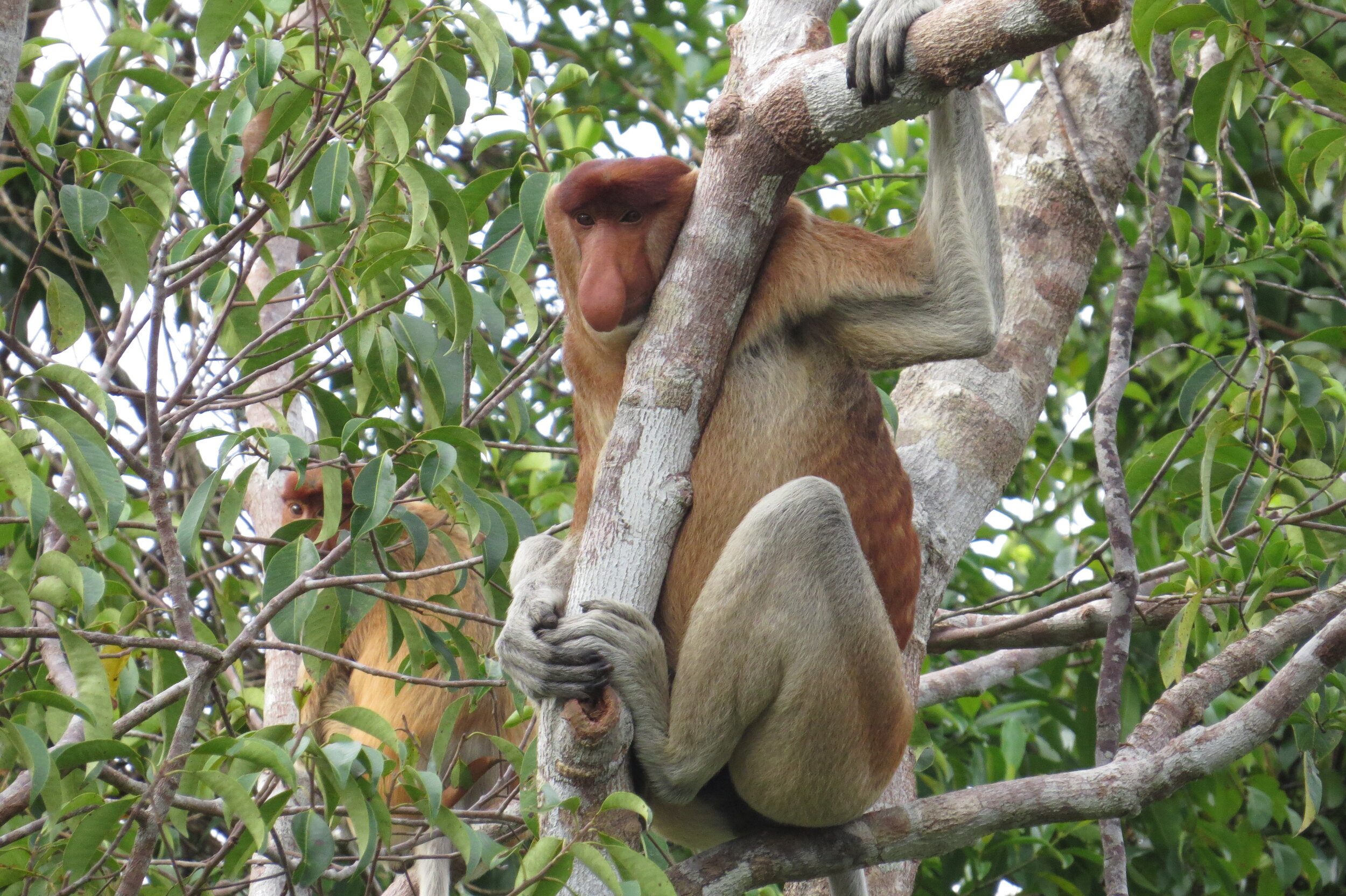
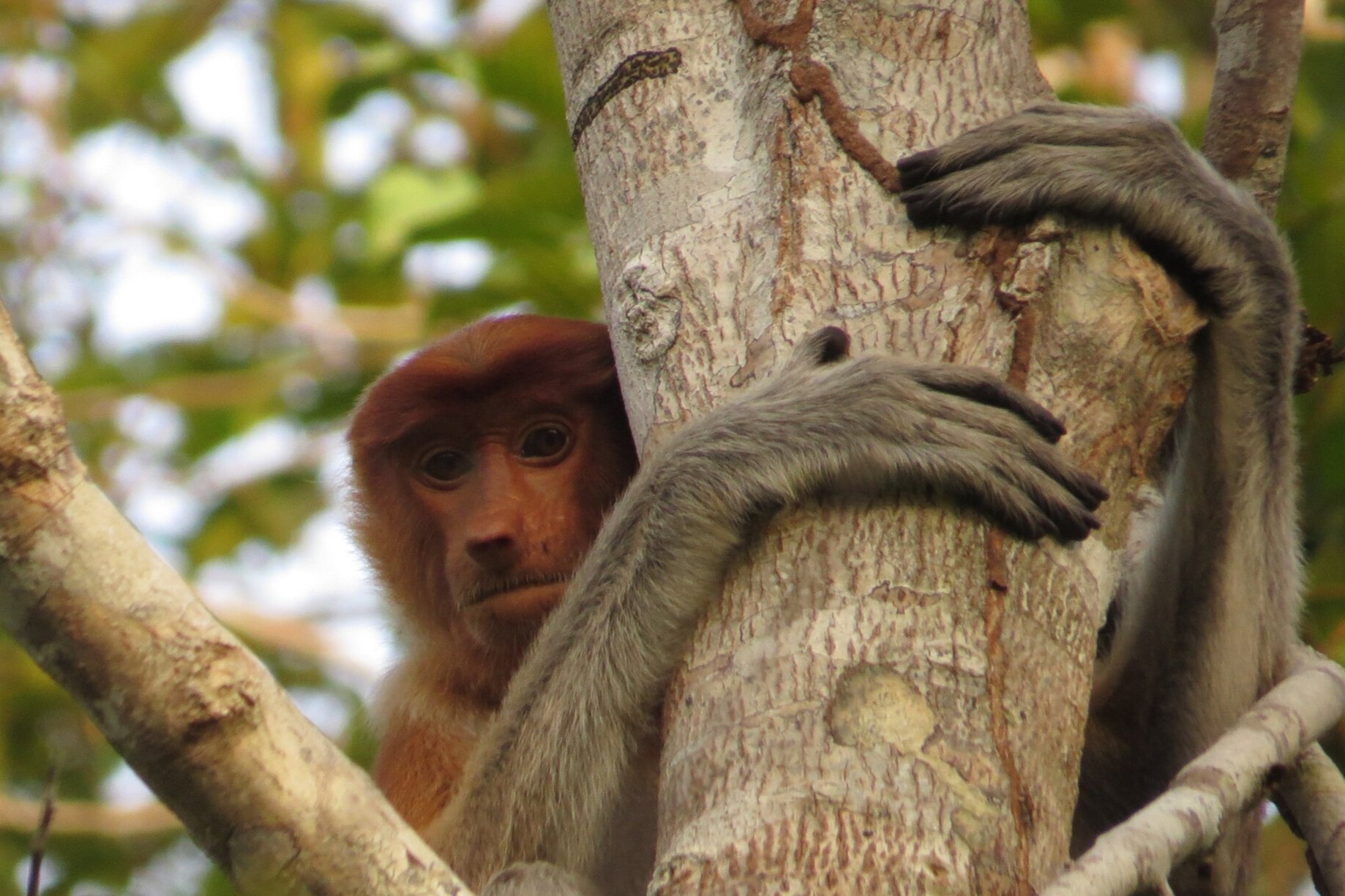
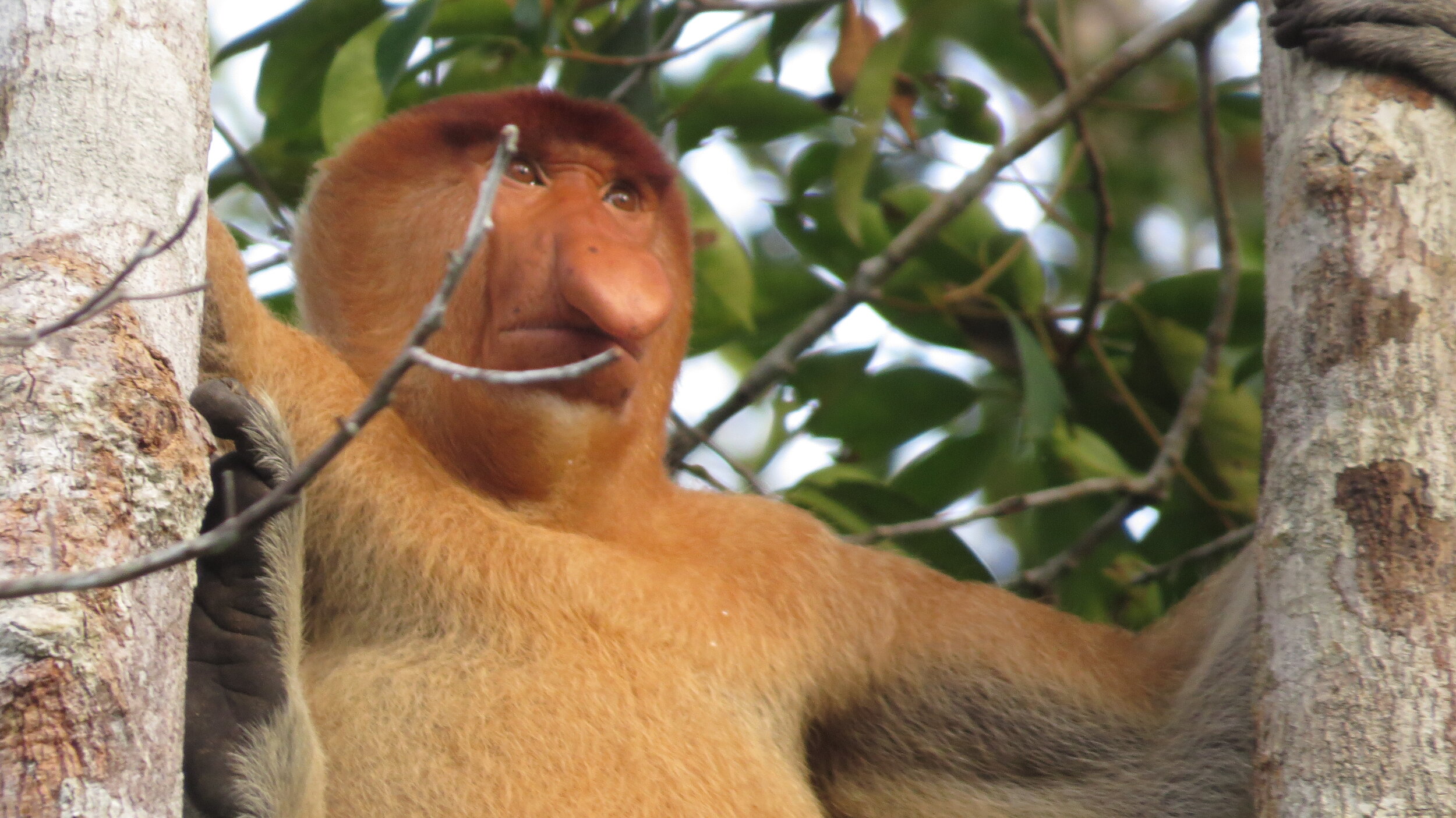
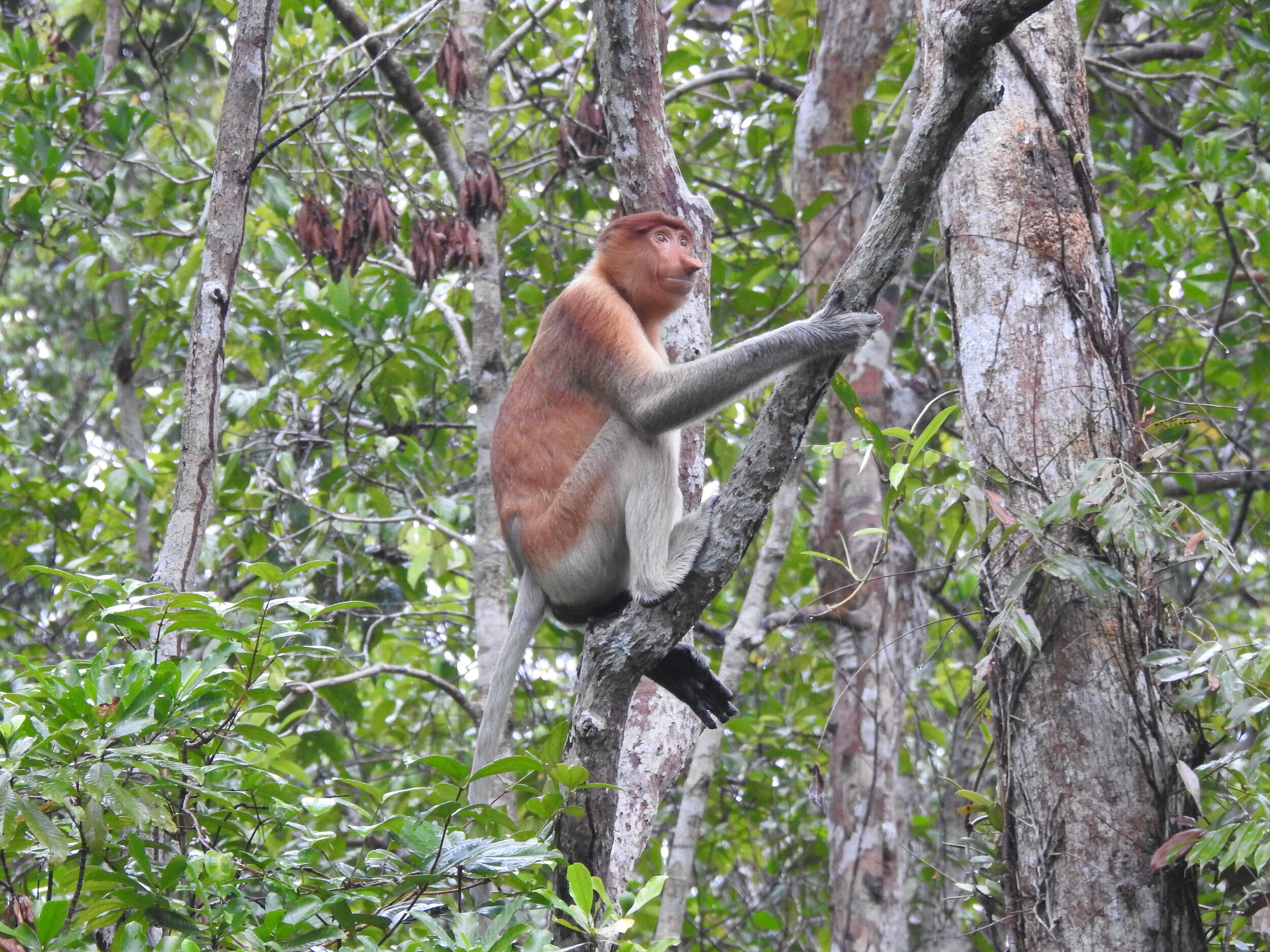
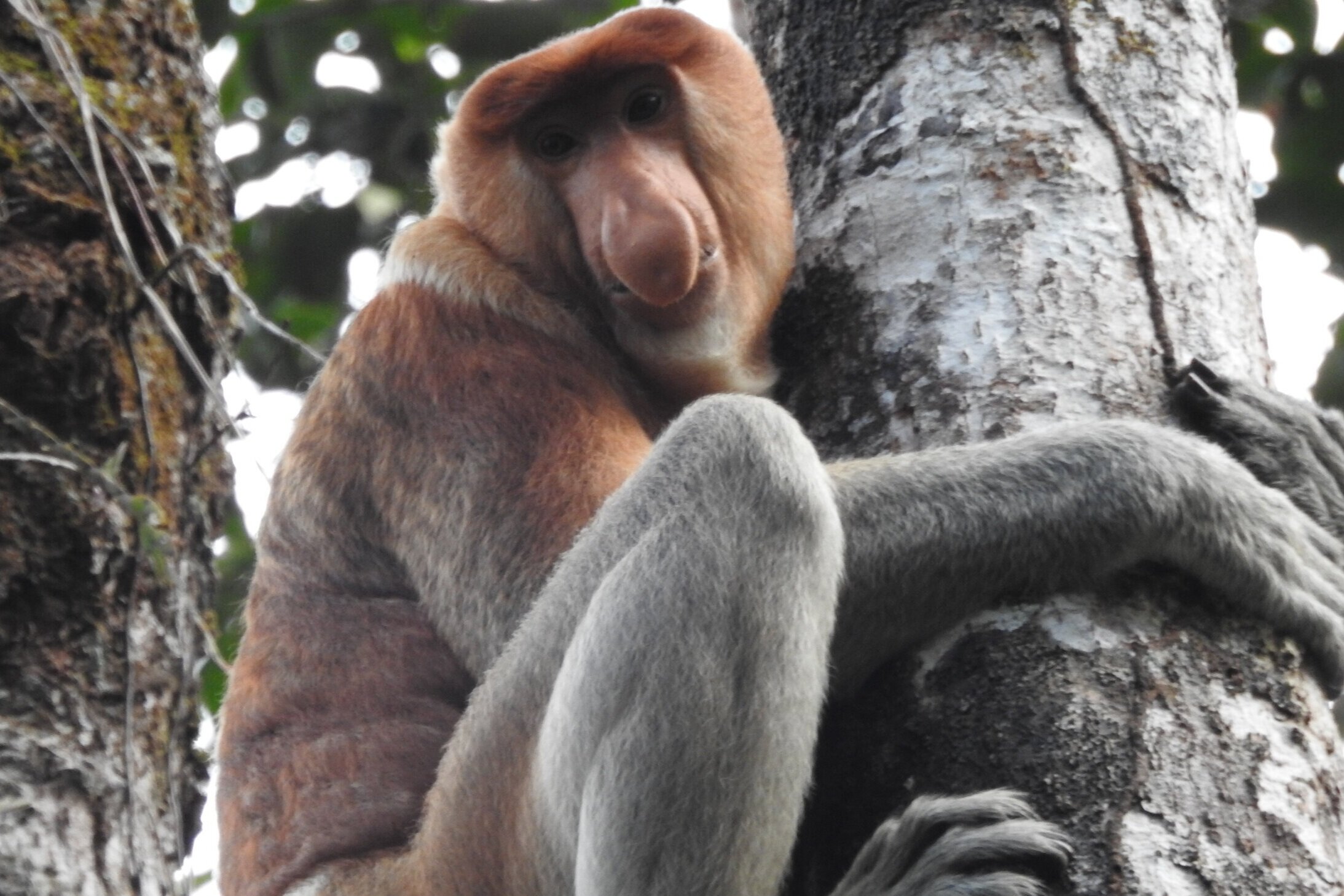
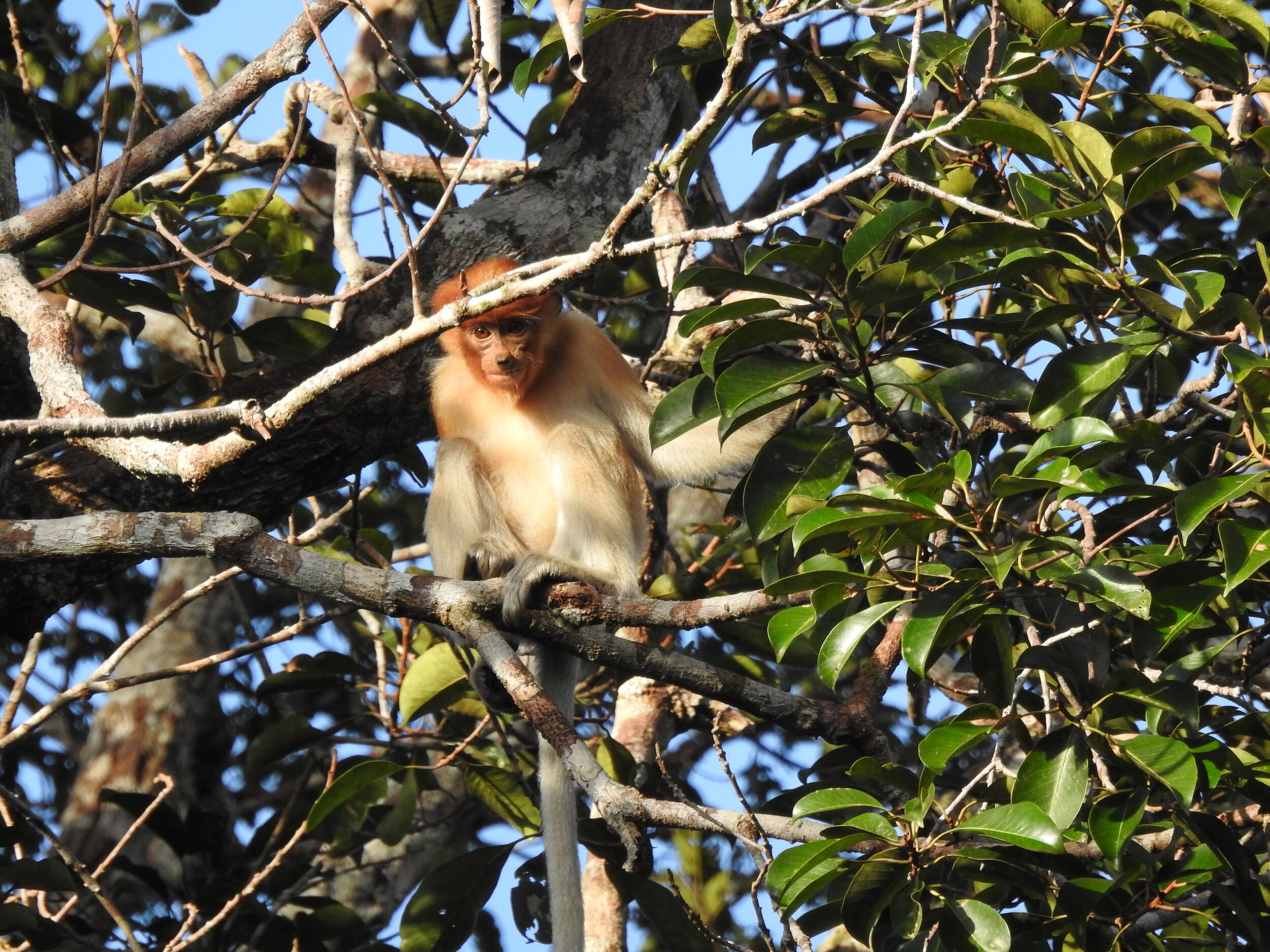


These endangered primates live in close social groups, often in submerged and swamp forests. This means that sometimes they must swim between trees in search of food and to help them do this, proboscis monkeys have evolved partially-webbed hands and feet, making them expert swimmers and helping them avoid predators like crocodiles in the water.
Macaques - There are two species of macaque spotted by our team; the Pig-Tailed Macaque (Macaca nemestrina), and Long-Tailed Macaque (Macaca fascicularis) also known as Crab-Eating Macaque.
Some roam the forest independently in search of food, but the majority of macaques are found in flexible family groups. They always appear to be on the move and as such are one of the most commonly seen animals captured on our remote forest camera traps.
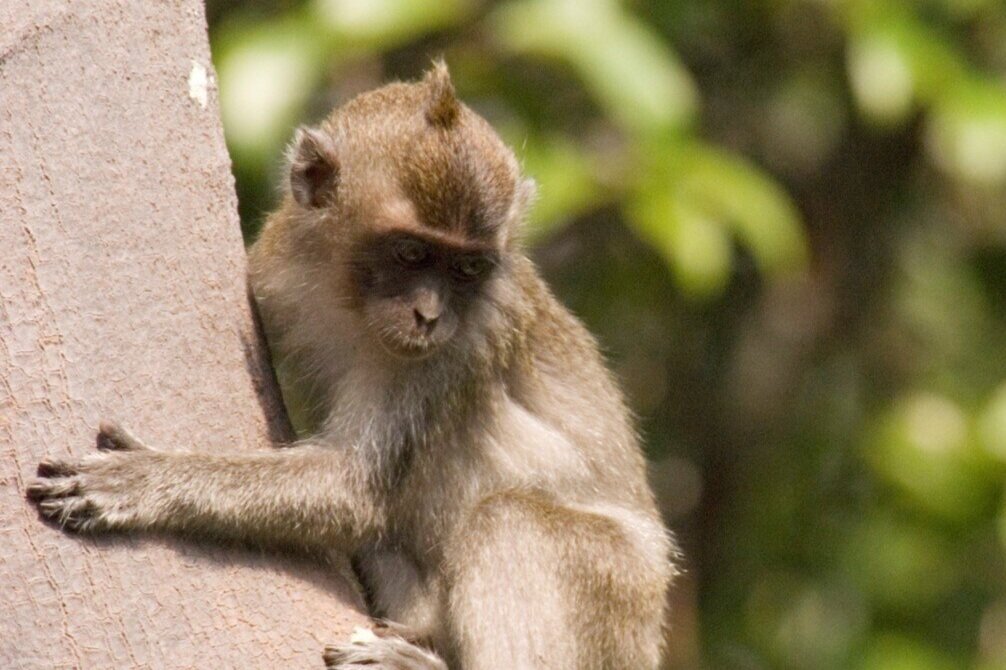
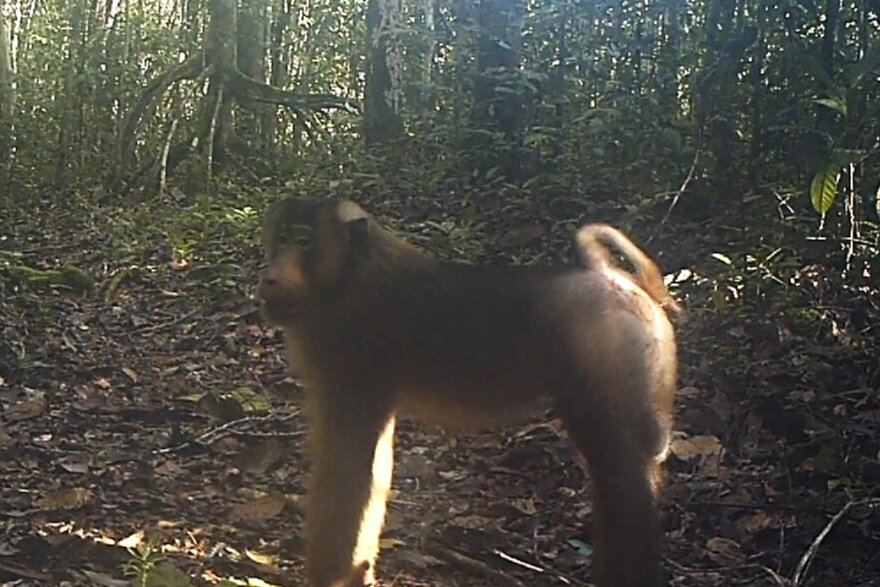
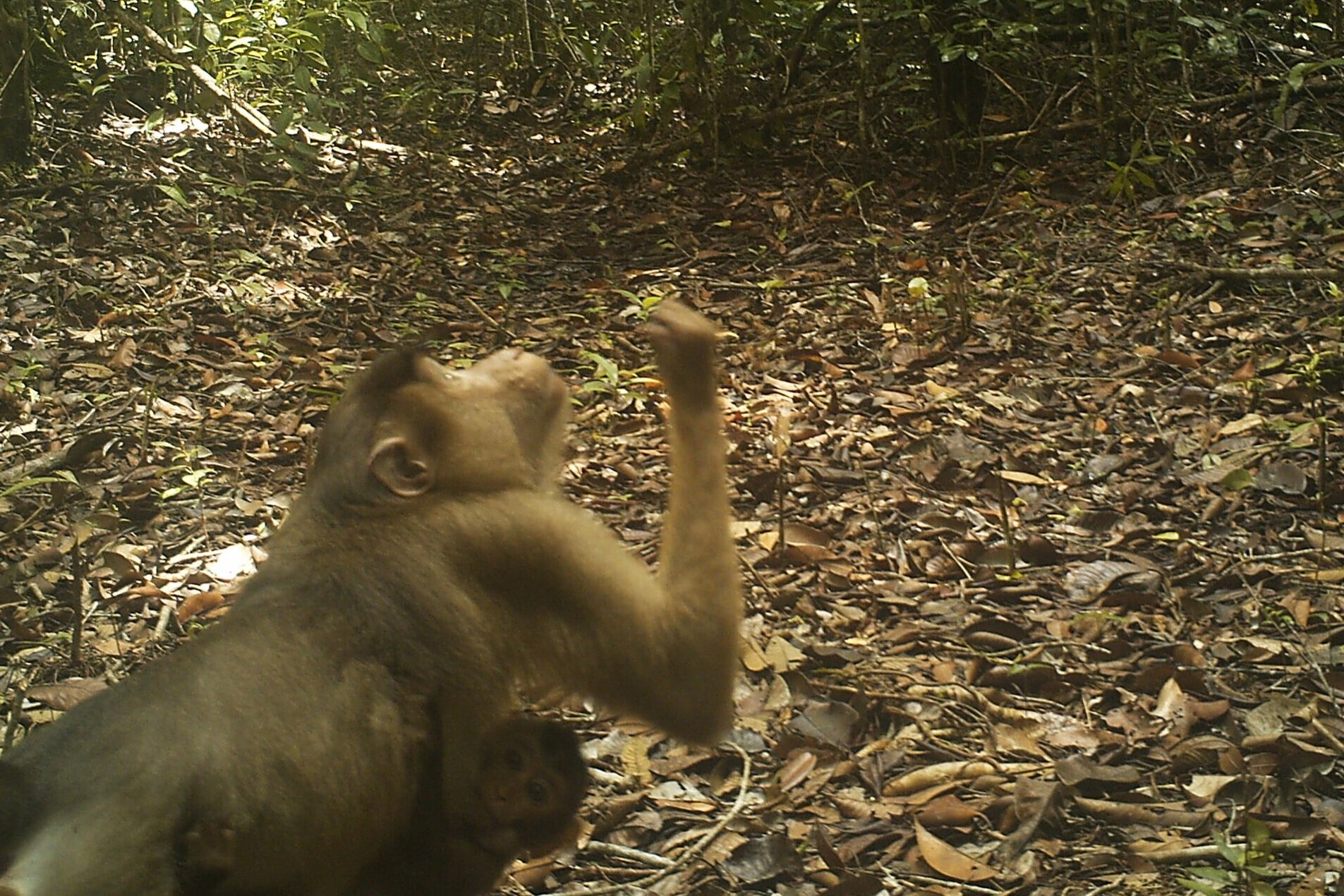
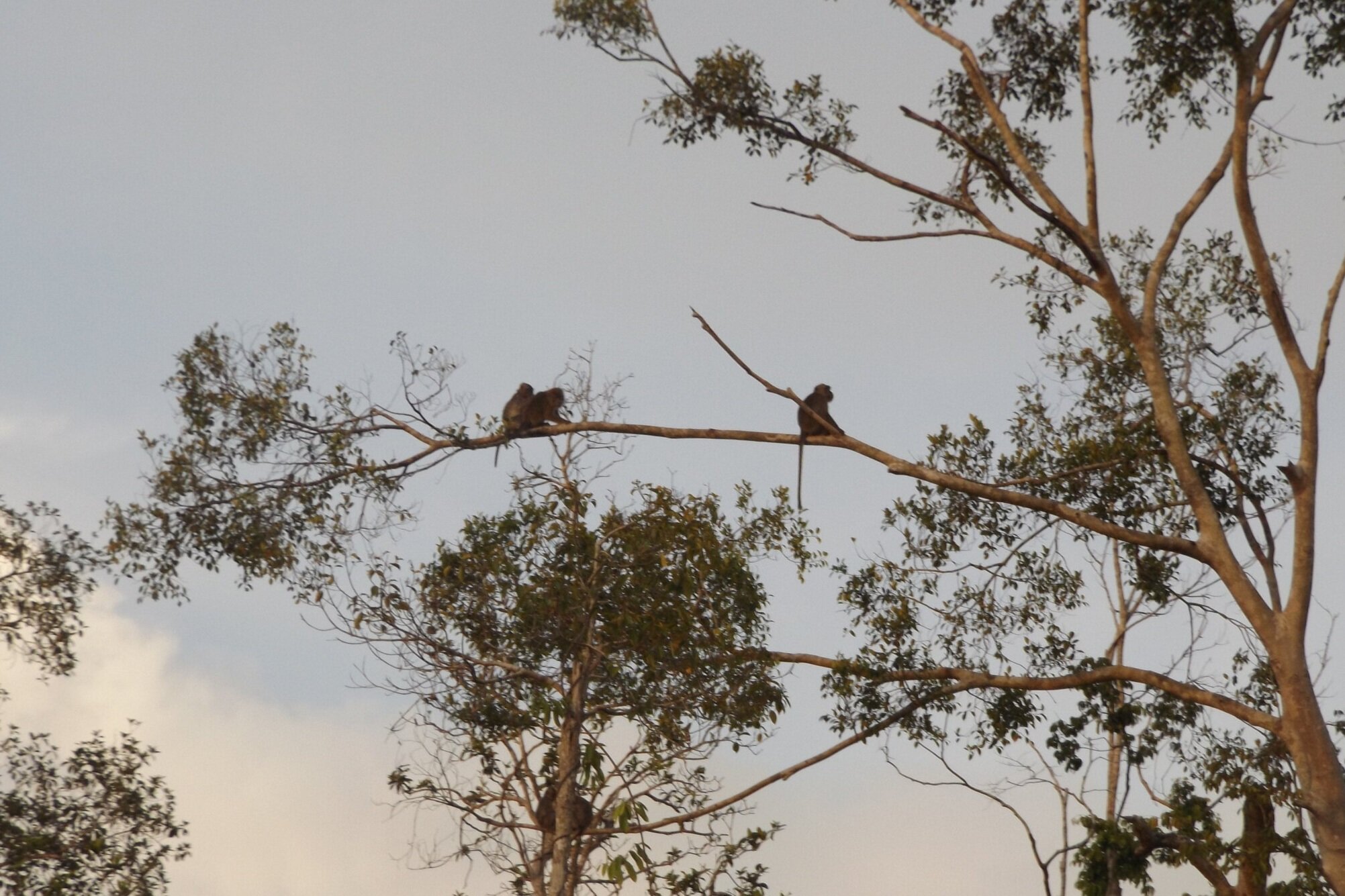
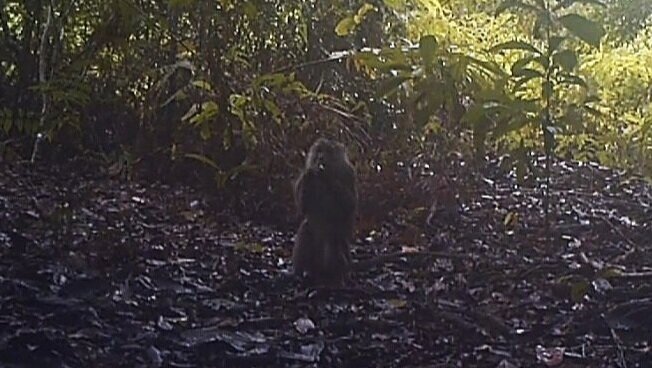
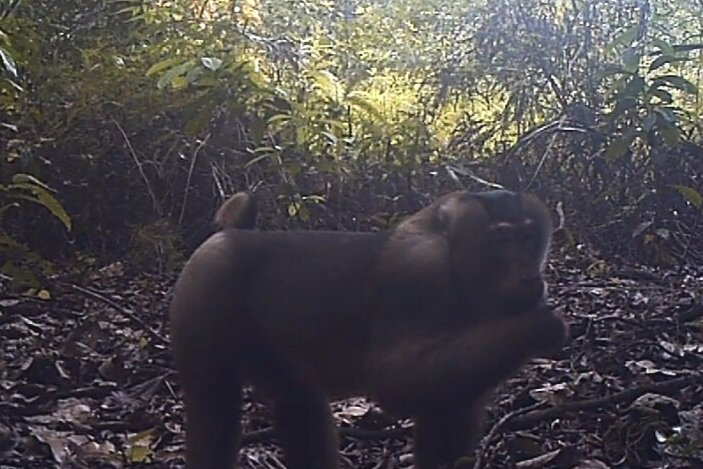
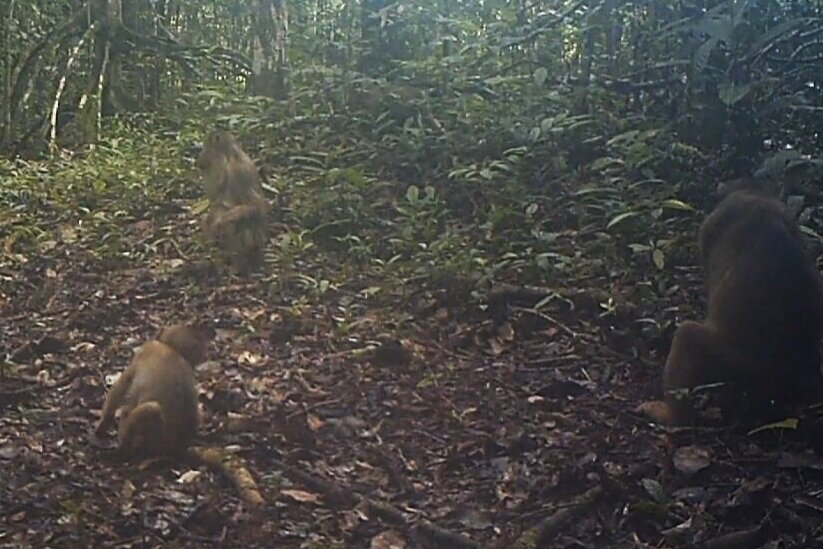
When it comes to their diet these primates are certainly not picky. Macaques are generally opportunistic omnivores and will feast on anything from leaves and seeds to invertebrates and eggs, it’s this versatility that makes them such a successful primate species around the world.
Langurs - These primates are also called ‘leaf monkeys’ due to their herbivorous diet. Comparatively little is known about their behaviour due to their elusive nature, but our team on occasion have spotted Silver Langur (Trachypithecus cristatus) and Red Langur (Presbytis rubicunda), also known as the Maroon Langur. It’s thought that the White Fronted Langur (Presbytis frontata) has also been caught on remote camera traps in the Belantikan region, another habitat which the Foundation help conserve.
Bornean White-Bearded Gibbon - Hylobates albibarbis - This is another species endemic to Borneo and listed as endangered due to the ongoing threat of habitat loss. Gibbons are neither monkeys or great apes, instead classified as ‘lesser apes’, but are perhaps the fastest primate when it comes to travelling through the canopy. It has been said that their long arms can swing them from branch to branch up to 34mph!
Gibbon pairs often mate for life and travel in small family groups. Each morning they will often strengthen this bond by singing a ‘duet’ which can resonate through the forest over a mile away, notifying other groups of their presence.
Western Tarsier - Cephalopachus bancanus - Also known as Horsfield’s Tarsier, these are the smallest primates found in Borneo. It’s understood that tarsiers are some of the oldest living primates, separated into 18 species which are all found in South East Asia.
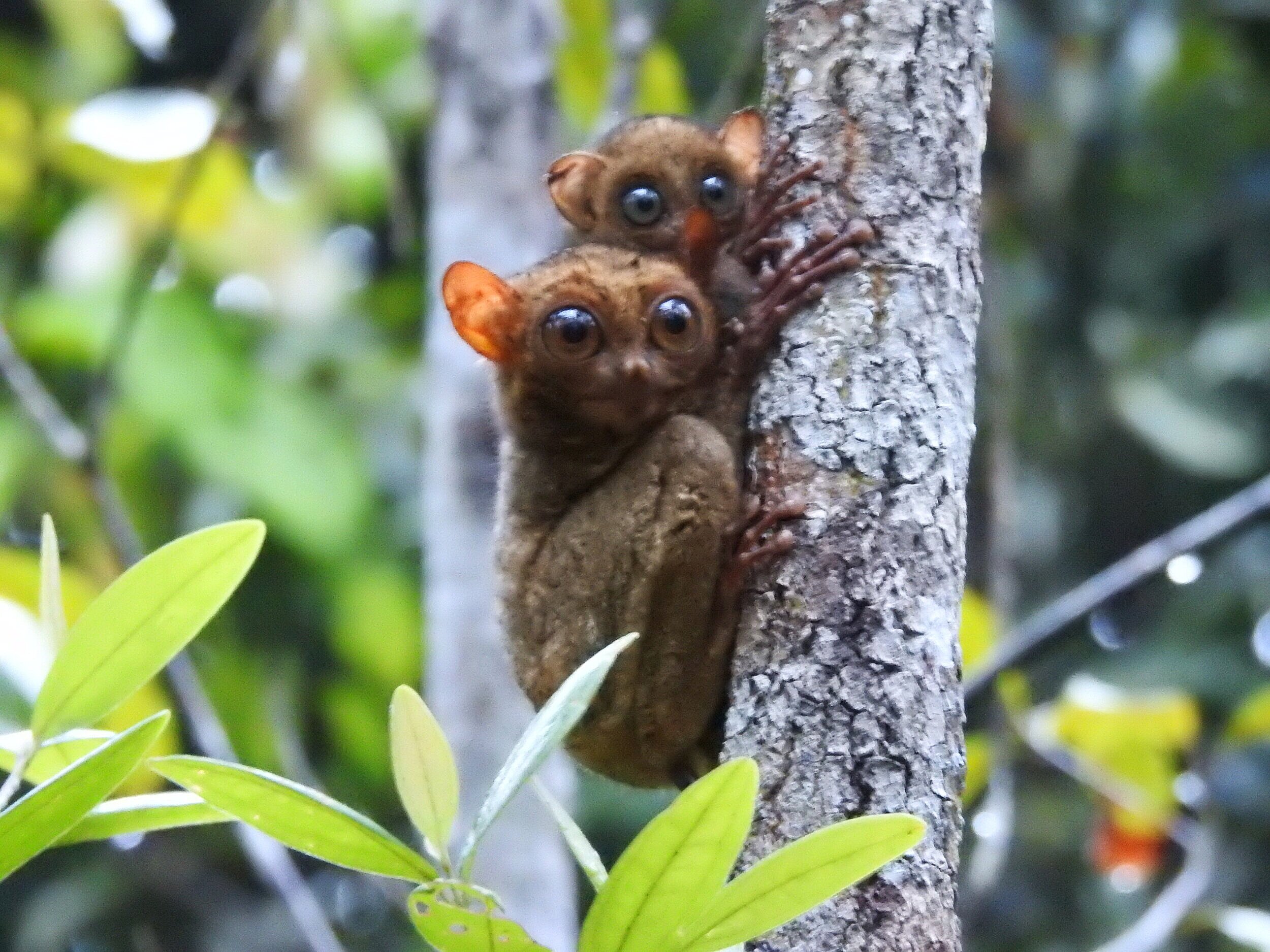


Tarsiers are the only entirely carnivorous primates. Using their huge eyes to spot prey in the dark and then springing into action using their long legs, tarsiers feed on a range of nighttime creatures, primarily flying insects such as cicadas, moths, and beetles.
Bornean Slow Loris - Nycticebus borneanus - The large forward-facing eyes of the slow loris also indicate that they are a nocturnal species, perfectly adapted to hunt insects and small vertebrates in the trees.
They may look cute and cuddly, but the slow loris is the only primate known to have venom. Secreted from the brachial gland on their upper arm, it’s not fully understood why slow loris possess a bite which can be venomous. Perhaps this mysterious trait is why slow loris are regarded as the guardians of heaven in some local folklore.
Your support helps us provide a natural home to all of these primate species. Keep up to date on our work and subscribe to our monthly e-news updates to find out what other diverse wildlife species your crucial support protects.


